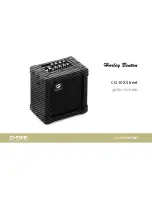
BA660.doc
01/01/97
17 of 25
Theory of Operation
S U M M A R Y O F H O W T O F O L L O W T H E D I A G R A M S .
The best way to understand the operation of the BA-660 is to study
the system drawing of the schematics. The boxed figures that
indicate sheets are hierarchical symbols that relate directly and
functionally. As an example, the first stage of gain is on sheet three
and all of the interconnections to the rest of the box are indicated
by the lines on sheet one. The input coupling is all contained on
sheet 3. The input coupling of the "Line In" is indicated
completely on the system diagram.
All signal interconnections are done via signal names, such as
"MIC_OUT-". The interconnected names will be indicated
wherever possible on the left and right sides of the individual
schematic sheets.
The basic function is indicated by the name of the sheet.
The circuitry is unique as it fully balanced from input to output both
internally and externally. The signal paths for the "+" and the "-" are
cross-coupled and balanced. The circuit topology keeps them separate
and they are not combined at any point internally in the unit.
Basic tube operation.
The tube operates at a nominal quiescent voltage of +150 VDC. The
swing range is +300 to 0V. and the idling point is set by the servo
feedback op-amps that drive the bottom current source. The tubes are
operating pure "Class-A" at 8.6 ma. This operating point is
established by the resistor on the bottom current source that is
approximately 475
Ω.
The traditional cathode biasing resistor and
bypass capacitor have been replace by a triple cascode connected
constant current source.
Gain Settings
The gain of the three gain stages is determined by the Mu of the tube
minus the degeneration of the coupling resistor between the




































